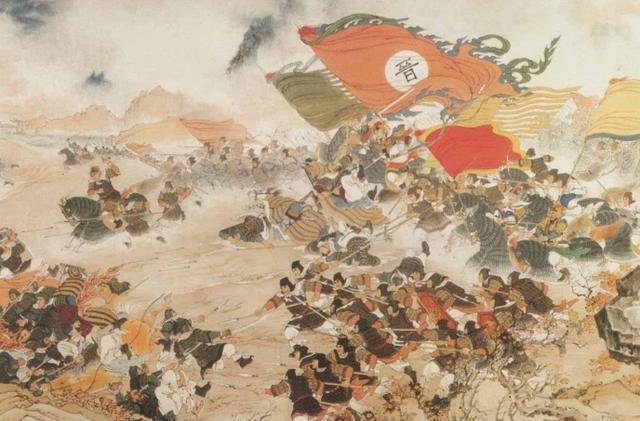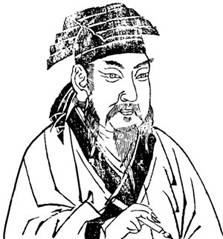The Three Kingdoms Period and the Southern and Northern Dynasties
5 min readThe period from 220 AD to 589 AD witnessed the rise and fall of the Wei,Jin,Southern and Northern Dynasties in Chinese history.A turbulent political situation,the rise of multiple hegemonies and the entry of northern ethnic groups into the central plains resulted in long-tem disunity of the country and confrontation between the south and north.
The main reason for the struggles among local warlords was the malignant expansion of local despots since the Eastern Han Dynasty.Upon the establishment of the Eastern Han,Liu Xiu awarded ministers and relatives greatly.Some famed families monopolized the key offices of the court for several generations.They greedily merged land by means of political privileges and set up nationwide manors. Bankrupted and exiled peasants were forced to attach themselves to the despots and landlords as tenant peasants.These landlords had political privileges and tyrannized the local areas.They had economic power over the tenant peasants.They also built high walls,moats and private armed forces.Seizing the opportunity of the turbulent situation,they crazily expanded their power,growing into warlord groups that monopolized local places and initiating wars against others for hegemony.That finally resulted in the rise of three powers,known as Caowei,Shuhan and Sunwu.

Cao Cao was once the Commander for Military Standards during the regime of Emperor Lingdi at the end of the Han Dynasty and participated in the allied troop crusading against the rebellious minister Dong Zhuo.He later defeated the YellowTurbans Uprising at Qingzhou,incorporated more than 300,000 soldiers and further established a valiant army called“Qingzhou Troops.”In 196 AD,Cao Cao took back Emperor Xiandi,who had been held under duress by Dong Zhuo,and moved the capital to Xuxian(present-day Xuchang,Henan),gaining a favorable position of“coercing the king to control all his vassals.”In 200 AD,he won the battle at Guandu against the troops of Yuan Shao and gained control over areas both north and south of the Yellow River.Cao Cao further conquered Wuhuan of Liaoxi,basically unifying the northern part of China. In 208 AD, he led a troop southward but was defeated by the allied army of Sun Quan and Liu Bei at Chibi, resulting in the pattern of separatist regimes among three kingdoms. Retreating to the north, Cao Cao successively occupied Guanzhong and Liangzhou and expanded the scope of his power in the northwest areas. Politically, Cao Cao respected the wise and believed talent wasthe only criterion for official selections. He also beefed up centralized ruling an attacked those who were getting rich or powerful through illegal means. Economically, he prohibited land merging, implemented the Tuntian System (a kind of government-encouraged agricultural system) and Zudiao System(a kind of tax system) and recruited exiled peasants to reclaim barren land on a large scale. That greatly promoted the development of northern economy, which was once damaged by ceaselesswars, and helped the widespread desolate fields change into a land of harvest and abundance. After Cao Cao’s death in 220 AD, Cao Pi dethroned Emperor Xiandi and established the Wei Dynasty, which was historically called Caowei.
Liu Bei was a descendant of the royal family of the Han Dynasty. After the family fortunes declined in his early years, he went to his relative, Liu Biao, the governor of Jinzhou, for help. As a man of ambition, Liu Bei always hoped for hegemony and went everywhere for talents who could assist him. It is said he once paid three visits to the thatched cottage in Longzhong, Jinzhou to invite Zhuge Liang, who had retreated for refuge. Following the death of Liu Biao, Liu Bei controlled Jinzhou. In 211 AD, he attacked Hanzhong and further occupied Yizhou ir Sichuan, consolidating his rule over the southwestern regions. In 221 AD, Liu Bei declared himself a descendant of the former imperial family and established a state, historically called Shuhan, with the capital in Chengdu. Assisted by Prime Minister Zhuge Liang, Liu Bei implemented clean politics and paid particular attention to the state’s relations with local ethnic groups. Economically, he also made a vigorouseffort to popularize raising silkworms, and to develop iron-smelting, textile and other handicraft sectors, leading to the rapid development of the southwestern regions and close ties with the central plains.

Relying on rich and powerful landlords and inheriting his family fortunes in areas south of the Yangtze, Sun Quan was confronted with Caowei across the Yangtze and energetically expanded in areas south of the river. He later eliminated the forces of Liu Bei from Jinzhou and occupied Lingnan, extending his scope of power southeastward. In 229 AD, Sun Quan ascended the throne, established Jianye (present – day Nanjing) as the capital and changed the state tile to Wu, which was historically called Sunwu. Sun Quan had outstanding achievements in developing the economy in the backward areas south of the Yangtze.
Wu, Shu and Wu each achieved a regional unification, respectively making significant contributions to local society. Caowei was the strongest of all. Upon Zhuge Liang’s death, the Shuhan regime was monopolized by eunuchs, resulting in political corruption and waning national strength. The regime was finally eliminated by Caowei in 263 AD. After Emperor Mingdi of Caowei died, the regime was seized by the minister Sima Yan, who later came into power in 266 AD and changed the state title to Jin, historically called the Western Jin. At the end of the regime of Sunwu, the tyranny and extravagance of Emperor Sun Hao aroused widespread complaints and anger among the people. In 280 AD, the Western Jin ended Sunwu and thus unified the whole country. Due to bureaucratic corruption, the “Rebellion of Eight Princes”resulted from fief and the consequent sharpened class contradictions and ethnic conflicts, the Western Jin lasted for only 30 years and was ended by the northern ethnic regime in 316. In 317, the remaining royal family of the Western Ji moved to areas south of the Yangtze and established Jiankang (present-day Nanjing, Jiangsu) as the capital of the state, historically called Eastern Jin, which lasted about 100 years. In 420 AD, Liu Yu ended the Eastern Jin and changed the state title to Song. Since then, the areas south of the Yangtze witnessed frequent changes of regimes from Song (420-479), Qi(479-502) to Liang (502-557) and Chen (557-589), which were collectively called the Southern Dynasties in Chinese history.A dozen ethnic regimes took root in the north from 304, generally called the 16 States Period. In 439, the Northern Wei, led by Tuoba from the Xianbei ethnic group, unified the Yellow River Valley. Later on, after divisions and replacements, the Eastern Wei (534-550), the Northern Qi (550-577), the Western Wei (535-556) and the Northern Zhou (557-581) came out and were called the Northern Dynasties. The Northern and Southern Dynasties confronted each other and are collectively called the Southern and Northern Dynasties in Chinese history.

Drastic social turmoil and long-term wars led to the division of the state, economic decline and destruction of social civilization. After more than three centuries of chaos, many northern ethnic groups gradually merged during the regime conflicts and exchanges. The southern areas made unprecedented economic development and laid a solid foundation for reunification at a higher level.








